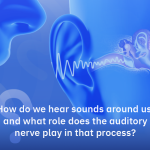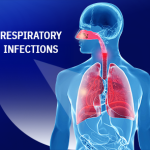Facial Nerve
The facial nerve (cranial nerve VII) is one of the most important cranial nerves in the human body, it plays a vital role in controlling facial muscle movement, emotional expression, and transmitting certain sensory signals. Interestingly, its impact is not limited to the face; it also indirectly influences hearing and balance. In this article, you’ll learn about its causes, symptoms, and treatment options.
- What is the Facial Nerve
- Functions of the Facial Nerve
- Causes of facial nerve inflammation
- Symptoms of facial nerve disorders
- Diagnosis of Facial Nerve Disorders
- Treatment of Facial Nerve Disorders
- Complications of Facial Nerve Inflammation
- When to See a Doctor
What is the Facial Nerve
The facial nerve, also known as cranial nerve VII, is one of the twelve cranial nerves that originate directly from the brain. This nerve is crucial in our daily lives, as it is responsible for almost every facial movement—from smiling to frowning.
Functions of the Facial Nerve
The facial nerve, also known as cranial nerve VII, is one of the twelve cranial nerves that originate directly from the brain. This nerve is crucial in our daily lives, as it is responsible for almost every facial movement—from smiling to frowning.
Motor functions:
- Controls facial expression muscles such as smiling, frowning, closing the eyes, and raising the eyebrows.
- Assists in oral movements like blowing, whistling, and partly chewing.
Sensory functions:
- Transmits taste sensation from the front two-thirds of the tongue.
- Carries some sensory signals from the outer ear.
Secretory (Glandular) functions:
- Stimulates the lacrimal glands to produce tears.
- Activates certain salivary glands such as the submandibular and sublingual glands, aiding in mouth moisture and digestion.
Causes of facial nerve inflammation
When the facial nerve becomes inflamed, it can lead to a condition known as Bell’s palsy, which causes sudden weakness on one side of the face, the exact cause is not fully understood, but it is often linked to viral infections. Fortunately, most people recover completely within about six months.
However, facial paralysis may sometimes be a sign of more serious conditions, including:
- Stroke: Damage to brain cells due to lack of oxygen or bleeding may affect the facial nerve.
- Head and neck injuries: Fractures in the skull or direct trauma to the face can damage the nerve.
- Tumors: Growths in the head or neck region may compress the facial nerve and cause paralysis.
- Autoimmune diseases: Conditions such as multiple sclerosis or Guillain-Barré syndrome can affect the nervous system and lead to facial paralysis.
- Infections: Middle ear infections or Lyme disease (transmitted by tick bites) can inflame the facial nerve.
- Birth-related paralysis: Rarely, newborns may experience temporary facial paralysis during birth, which usually resolves on its own.
Symptoms of facial nerve disorders
Early Warning Signs (Before Complete Paralysis):
- Difficulty chewing or drinking, especially on one side of the mouth.
- Trouble closing the eye or blinking naturally.
- Decreased sense of taste on the front part of the tongue.
- Tightness or pulling sensation in one side of the face.
- Drooling due to weak mouth muscles.
- Excessive tearing or unusual dryness of the eyes.
- Pain, tingling, or numbness behind the affected ear.
When Paralysis Occurs:
- Difficulty controlling the face while eating or drinking, causing food or liquids to spill.
- Loss of natural facial expressions like smiling, laughing, or frowning.
- Inability to fully close or open the eye on the affected side.
- Heightened sensitivity to sound in the affected ear.
- Dryness of the eyes and mouth due to weak gland function.
- Facial drooping on one side.
- Frequent or persistent headaches.
- Noticeable weakness in facial muscles.
Diagnosis of Facial Nerve Disorders
Clinical Examination:
- The doctor observes facial movements such as smiling, raising eyebrows, closing eyes, and frowning.
- Checks the ability to puff out the cheeks or move the lips.
- Identifies weakness or paralysis on one side of the face.
Medical History:
- Asks about when symptoms started and whether they followed a cold, ear infection, or eye infection.
- Notes any chronic conditions like diabetes or high blood pressure.
- Checks for any history of trauma or head injury.
Diagnostic Tests:
- MRI: Detects tumors, infections, or nerve issues.
- Blood tests: Identify viral infections or autoimmune diseases.
- CT scans: Used to detect skull fractures or injuries.
- Nerve conduction studies: Measure the nerve’s activity and response.
Treatment of Facial Nerve Disorders
Treatment depends on the underlying cause. In many cases, patients may be referred to physical, occupational, or psychological therapy to support recovery, the good news is that most patients recover fully within a short period, whether or not they receive medication.
Medications:
Early use of corticosteroids combined with antiviral drugs has been shown to significantly improve recovery rates.
Physical Therapy:
- Helps strengthen facial muscles.
- Prevents stiffness and long-term damage.
- Teaches special exercises to restore facial movement and symmetry.
Surgery:
If symptoms persist for 6–12 months without improvement, cosmetic surgery may be recommended to improve eyelid closure and facial symmetry.
Complications of Facial Nerve Inflammation
Most patients make a complete recovery, but in severe cases, complications may include:
- Permanent facial nerve damage, leaving lasting weakness.
- Chronic dry eye, which may cause repeated infections, corneal ulcers, or even vision loss in extreme cases.
- Synkinesis (involuntary movement): For example, the eye may close when trying to smile.
When to See a Doctor
Seek medical attention immediately if you notice:
- Sudden weakness or paralysis on one side of the face.
- Unusual sensitivity to sound.
- Frequent dizziness or balance problems.
- Partial or complete loss of taste.
The facial nerve is an essential part of our daily lives, allowing us to express emotions and communicate non-verbally, while Bell’s palsy may seem sudden and alarming, most people recover completely with time and proper treatment. The key lies in early diagnosis and adherence to medical advice.



